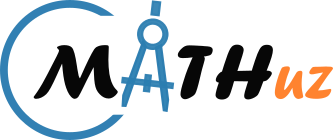Note: This is the Solution of exercise 8 from newly published book by PCTB (Punjab Curriculum and Textbook Board, Pakistan) for new 9th session 2025 Onward.
Exercise 8
Question # 01: Four option are given against each statement. Encircle the correct option.
\((i)\) Which of the following expression is often related to inductive reasoning:
\( a) \quad \) based on repeated experiments
\( b) \quad \) if and only if statements
\(c) \quad \) Statement is proven by a theorem
\( d) \quad \) based on general principles
\( \text{Answer/Explanation}\)
\((ii)\) Which of the following sentences describe deductive reasoning?
\( a) \quad \) general conclusions from a limited number of observations
\( b) \quad \) based on repeated experiments
\(c) \quad \) based on units of information that are accurate
\( d) \quad \) draw conclusion from well known facts
\( \text{Answer/Explanation}\)
\((iii)\) Which one of the following statements is true?
\( a) \quad \) The set of integers is finite
\( b) \quad \) The sum of the interior angles of any quadrilateral is always \(180^\circ\)
\(c) \quad \) \(\frac{22}{7}\notin {Q}’\)
\( d) \quad \) All isosceles triangles are equilateral triangles
\( \text{Answer/Explanation}\)
\((iv)\)\(\quad\)Which of the following statements is the best to represent the negation of the statement “The stove is burning”?
\( a) \quad \) the stove is not burning
\( b) \quad \) the stove is dim
\(c) \quad \) the stove is turned to low heat
\( d) \quad \) it is both burning and not burning
\( \text{Answer/Explanation}\)
\((v)\) \(\quad\)The conjunction of two statements \(p\) and \(q\) is true when:
\( a) \quad \) both \(p\) and \(q\) are false
\( b) \quad \) both \(p\) and \(q\) are true
\(c) \quad \) only \(q\) is true
\( d) \quad \) only \(p\) is true
\( \text{Answer/Explanation}\)
\((vi)\) \(\quad\) A conditional is regarded as false only when:
\( a) \quad \) antecedent is true and consequent is false
\( b) \quad \) consequent is true and antecedent is false
\(c) \quad \) antecedent is true only
\( d) \quad \) consequent is false only
\( \text{Answer/Explanation}\)
\((vii)\)\(\quad\) Contrapositive of \(q\rightarrow p\) is
\( a) \quad \) \(q\rightarrow~p\)
\( b) \quad \) \(\sim q\rightarrow p\)
\(c) \quad \) \(\sim p\rightarrow \sim q\)
\( d) \quad \) \(\sim q\rightarrow \sim p\)
\( \text{Answer/Explanation}\)
\((viii)\)\(\quad\)The statement “Every integer greater than \(2\) is sum of two prime number” is:
\( a) \quad \) theorem
\( b) \quad \) conjecture
\(c) \quad \) axiom
\( d) \quad \) postulates
\( \text{Answer/Explanation}\)
\((ix)\)\(\quad\)The statement “A straight line can be drawn between any two points” is:
\( a) \quad \) theorem
\( b) \quad \) conjecture
\(c) \quad \) axiom
\( d) \quad \) logic
\( \text{Answer/Explanation}\)
\((x)\) \(\quad\)The statement “The sum of the interior angle of a triangle is \(180^\circ\)” is:
\( a) \quad \) converse
\( b) \quad \) theorem
\(c) \quad \) axiom
\( d) \quad \) conditional
\( \text{Answer/Explanation}\)
Question 2: Write the converse, inverse and contrapositive of the following conditionals:
\((i) \quad \) \(\sim p \rightarrow q\)
\((ii) \quad \) \(q \rightarrow p\)
\((iii) \quad \) \(\sim p \rightarrow \sim q\)
\((iv) \quad \) \(\sim q \rightarrow \sim p\)
Question 3: Write the truth table of the following.
\((i) \quad \) \(\sim (p\vee q)\vee(\sim q)\)
\((ii) \quad \) \(\sim(\sim q\ \vee \sim p)\)
\((iii) \quad \) \((p \vee q)\leftrightarrow(p \wedge q)\)
Question 4: Differentiate between a matehamtical statement and its proof. Given two examples.
Question 5: What is the difference between an axiom and a theorem? Give examples of each.
Question 6: What is the importance of logical reasoning in mathematical proofs? Give an example to illustrate your point.
Question 7: Indicate whether it is an axiom, conjecture or theorem and explain your reasoning.
\( (i) \) \(\;\) There is exactly onle straight line through any two points.
\( (ii) \) \(\;\) Every even number greater than \(2\) can be written as the sum of two prime numbers.
\( (iii) \) \(\;\) The sum of the angles in a triangle is \(180^\circ\).
Question 8: Formulate simple deductive proofs for each of the following algebraic expressions, prove that the L.H.S. is equal to the R.H.S.
\((i) \quad \) Prove that \((x-4)^2+9=x^2-8x+25\)
\((ii) \quad \)prove that \((x+1)^2=-(x-1)^2=4x \)
\((iii) \quad \)Prove that \((x+5)^2-(x-5)^2=20x\)
Question 9: Prove the following by justifying each step.
\((i) \quad \) \(\frac{4+16x}{4}=1+4x\)
\((ii) \quad \) \(\frac{6x^2+18x}{3x^2-9}=\frac{2x}{x-3}\)
\((iii) \quad \) \(\frac{x^2+7x+10}{x^2-3x-9}=\frac{x+5}{x-5}\)
Question 10: Suppose \(\small{x}\) is an integer. Then \(\small{x}\) is odd if and only if \(\small{9x+4}\) is odd.
Question 11: Suppose \(\small{x}\) is an integer. If \(\small{x}\) is odd, then \(\small{7x+5}\) is even.
Question 12: Prove the following statements
\( (a) \;\) If \(x\) is an odd integer, then show that \(x^2-4x+6\) is odd.
\( (b) \;\) If \(x\) is an even integer, then show that \(x^2+2x+4\) is even.
Question 13: Prove that for any two non-empty sets \(\small{A}\) and \(\small{B}\), \(\small{{(A\cap B)}’={A}’\cup {B}’}\).
Question 14: If \(\small{x}\) and \(\small{y}\) are positive real numbes and\(\small{x^2<y^2}\) then \(\small{x<y}\).
Question 15: The sum of the interior angles of a triangle is \(\small{180^\circ}\).
Question 16: If \(\small{a,b}\) and \(\small{c}\) are non-zero real numbers, prove that:
\((i) \quad \) \(\frac{a}{b}=\frac{c}{d}\Leftrightarrow ad=bc\)
\((ii) \quad \) \(\frac{a}{b}\cdot\frac{c}{d}=\frac{ac}{bd}\)
\((iii) \quad \) \(\frac{a}{b}+\frac{c}{b}=\frac{a+c}{b}\)
